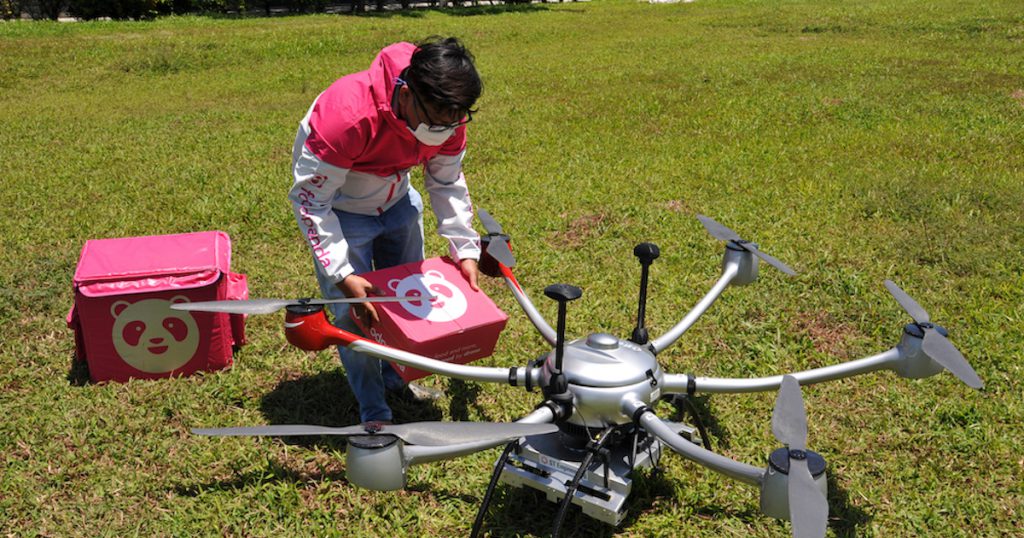Singapore’s leading delivery platform, foodpanda has partnered with ST Engineering in its latest innovation — food delivery on drones.
Called pandaFly, its first delivery test flight was held yesterday (13 August), where five packets of ayam penyet was delivered to a vessel located three kilometres off Marina South Pier.
The smashed fried chicken dish took under 10 minutes to reach the PACC Offshore Services Holdings Holdings (POSH) Vessel, which houses a crew who is currently quarantined.
“Better, Faster, Cheaper”
According to foodpanda, customers increasingly want to be able to buy “anything, from anywhere, and receive them immediately.”
The food delivery giant plans to meet the demands of these customers with pandaFly by making long-distance deliveries “better, faster and cheaper”.
In the last five years, foodpanda has managed to cut delivery times from 60 minutes to under 30 minutes. With the new pandaFly, customers are expected to receive their orders in less than 15 minutes.
The new pandaFly will act as a complement to current delivery riders.
It is slated to pick up and deliver orders at designated collection points located islandwide where one of foodpanda’s 12,000 riders will be waiting to complete the last-mile delivery.
“Much more than a novelty, drone deliveries will help us deliver over longer distances faster, while keeping costs low, so that we can continue to satisfy our customers more instantaneously,” said Luc Andreani, Managing Director of foodpanda Singapore.
DroNet Technology
The collaboration between foodpanda and ST Engineering was inked in March, and allows foodpanda to adapt DroNet — ST Engineering’s drone network system — to trial the delivery of “light food items”.
DroNet is an end-to-end drone network solution designed to carry out specific tasks or services autonomously in an urban environment.
Following the first test flight, foodpanda and ST Engineering will be looking to test drones that can fly further and for longer durations.
“The future of drone deliveries is now. Drones will make it possible to deliver things not delivered before, to places that were previously inaccessible,” said foodpanda.
But Will The Service ‘Fly’?
Food delivery via drone is taking flight, with other delivery companies like UberEats testing out the technology globally.
However, the service is not without its challenges. The technological investment costs are likely to be astronomical.
Timbré, a Singapore-based restaurant chain, launched ‘drone waiters‘ in 2016. The drones, which are equipped with sonar sensors and stereo-vision cameras, set the company back by around S$20,000 to S$60,000 per drone.
Though foodpanda did not mention the cost involved in developing pandaFly, this drone service will undoubtedly incur far greater costs than conducting a manual food delivery.
From manpower costs (delivery riders are still required for this drone delivery service), maintenance of drones, training fees to fly these drones, down to the drone licenses itself, all these add up to additional costs for the operator.
Despite Mr Andreani saying that customers will not have to contend with “crazy high delivery fees”, the cost to the company might render it tough for the service to take off.
Moreover, these drones only have the ability to carry “light food items”, which limits its use to also deliver bulky food items.
Other factors like the weather also have to be taken into consideration. Singapore’s rainfall is abundant, and it is unclear if foodpanda’s fleet of drones will be able to weather the storm.
Featured Image Credit: foodpanda
